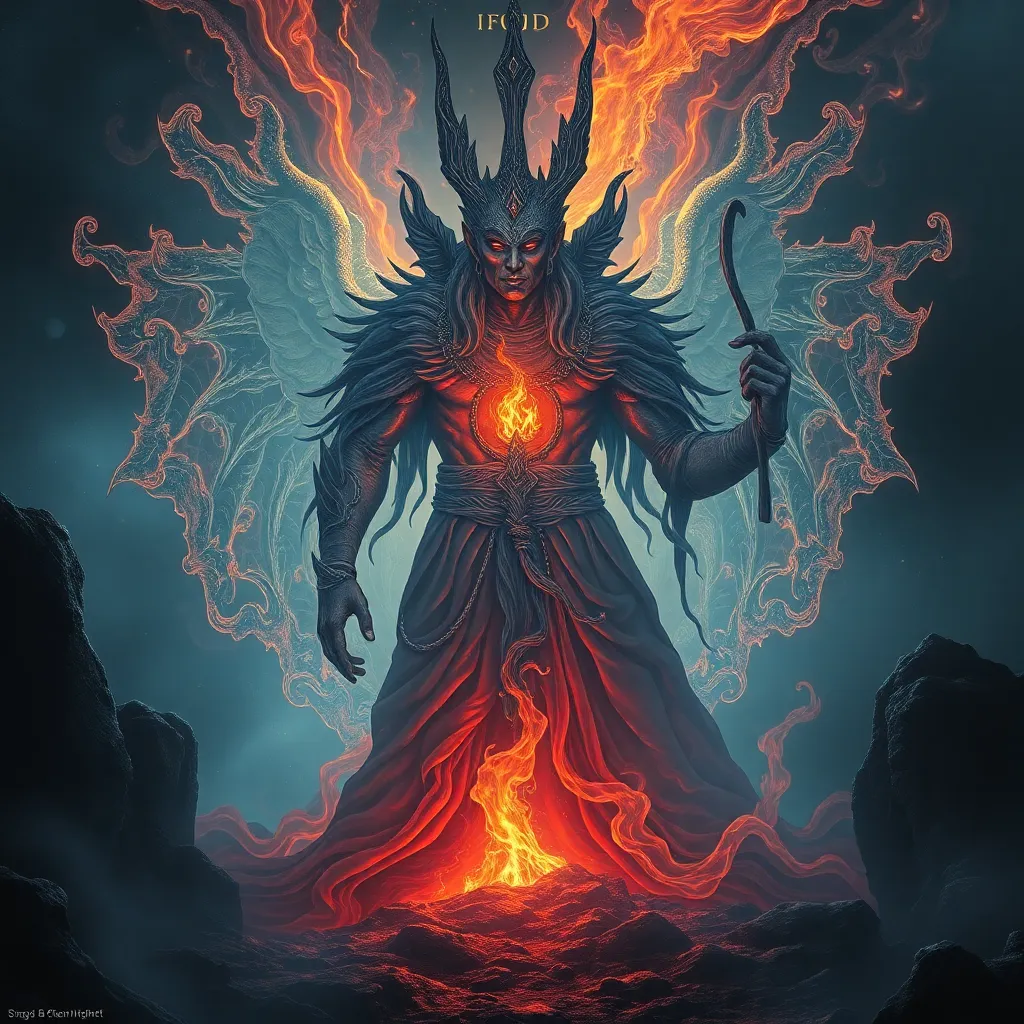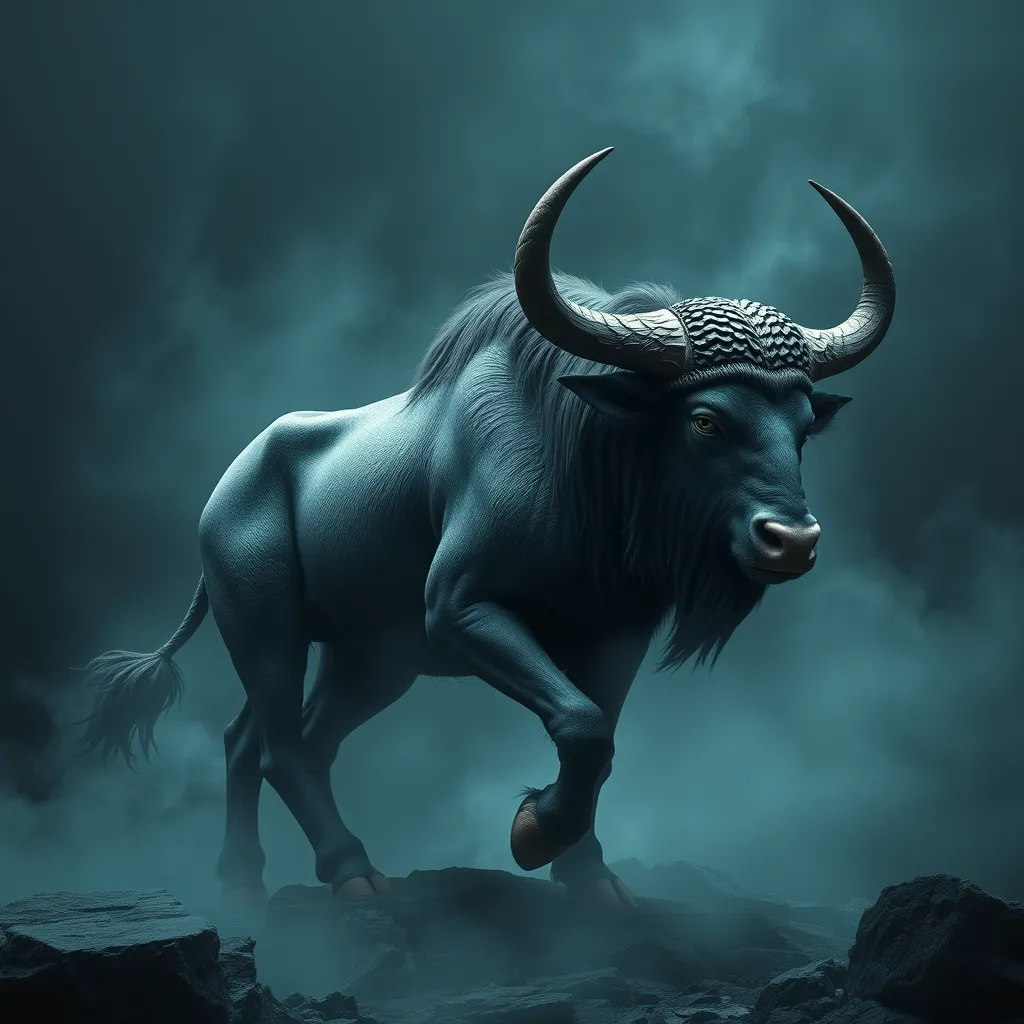The Ifrit and the Divine: Exploring their Relationship with the Creator
I. Introduction
The Ifrit, a creature originating from Arabian mythology, is often depicted as a powerful and fiery spirit, associated with both the supernatural and the natural world. Known for its strength, cunning, and sometimes malevolent nature, the Ifrit represents a complex figure in folklore.
In contrast, the concept of the Divine varies widely across different religious traditions. It typically embodies the ultimate creator, a source of moral authority, and a guiding force in the universe. Understanding the nature of the Divine can offer insights into the moral fabric of various cultures.
This article aims to explore the intricate relationship between the Ifrit and the Creator, examining their roles in mythology, their symbolic meanings, and the implications of their interactions.
II. The Nature of the Ifrit
A. Origins and characteristics of the Ifrit in Arabian mythology
The Ifrit is often described as a spirit of fire, with its origins rooted in pre-Islamic Arabian folklore. According to various traditions, the Ifrit is considered a type of jinn, beings created from smokeless fire, capable of both good and evil deeds. They possess immense strength and magical abilities, making them formidable figures in stories.
B. Symbolism and cultural significance of the Ifrit
The Ifrit symbolizes a variety of concepts, including:
- Struggle against oppression
- The duality of good and evil
- The chaos of nature and the unknown
In many tales, the Ifrit embodies the challenges that humans face in their lives, often serving as an antagonist that must be overcome.
C. Variations of the Ifrit in different cultures
While the Ifrit is predominantly associated with Arabian mythology, similar beings appear in various cultures, such as:
- **Marid**: Another type of jinn, usually depicted as more benevolent.
- **Asmodeus**: A demon in Judeo-Christian traditions, often linked to chaos and rebellion.
- **Fire spirits in other mythologies**: Many cultures have their own interpretations of fire spirits that reflect the characteristics of the Ifrit.
III. The Divine: Understanding the Creator
A. Different interpretations of the Divine across major religions
The Divine can be understood through various lenses depending on the religion. In monotheistic faiths like Christianity, Islam, and Judaism, the Divine is a singular, omniscient Creator. In polytheistic traditions, such as Hinduism, multiple gods embody different aspects of the Divine.
B. Common attributes associated with the Creator
Across these traditions, several attributes are commonly associated with the Divine:
- Omnipotence: All-powerful and capable of creating and destroying.
- Omniscience: All-knowing, understanding everything that exists.
- Omnibenevolence: All-good and just, with a focus on moral order.
C. The role of the Divine in shaping mythological narratives
The Divine often sets the stage for creation, moral laws, and the purpose of existence. Myths frequently explore the relationship between humanity and the Divine, highlighting themes of obedience, rebellion, and redemption.
IV. The Ifrit’s Role in Creation Myths
A. The Ifrit’s involvement in cosmic events and creation stories
In various creation myths, the Ifrit is portrayed as a significant player in cosmic events. For example, in some Arabian tales, the Ifrit assists in the shaping of the world, embodying the chaotic forces that must be tamed by the Creator.
B. Comparisons with other mythological beings and their roles
Similar to Titans in Greek mythology or the demons in Judeo-Christian texts, the Ifrit represents the chaotic elements that exist in opposition to divine order. These beings often challenge the Creator, leading to narratives centered on conflict and resolution.
C. Symbolic meaning of the Ifrit in the context of creation
The Ifrit symbolizes the raw, untamed power of nature and the universe. Its presence in creation myths often serves as a reminder of the delicate balance between order and chaos in the cosmos.
V. The Relationship Between the Ifrit and the Divine
A. Historical perspectives on the Ifrit’s interactions with the Creator
Throughout history, the Ifrit has been depicted as both a servant and a challenger to the Creator. In some tales, the Ifrit is bound to serve the divine will, while in others, it seeks to defy or undermine the authority of the Creator.
B. The duality of the Ifrit as both a servant and a rebel
This duality is pivotal in understanding the Ifrit’s character. It can act as:
- A protector of ancient secrets and treasures.
- A tempter leading mortals astray.
This complex nature reflects the broader themes of free will and moral choice present in many religious narratives.
C. Case studies from folklore illustrating this relationship
Folklore provides numerous examples where the Ifrit interacts with the Divine:
- The tale of King Solomon, where the Ifrit is summoned to perform tasks but ultimately is bound by the king’s authority.
- Stories where the Ifrit opposes divine messengers, showcasing its rebellious nature.
VI. Thematic Implications of the Ifrit’s Relationship with the Divine
A. Concepts of free will and predestination
The tension between the Ifrit and the Divine raises questions about free will. Are the actions of the Ifrit predetermined by the Creator, or does it possess the agency to choose its path?
B. Good vs. evil: The moral implications of the Ifrit’s nature
The Ifrit embodies both good and evil, challenging simplistic notions of morality. This complexity invites deeper reflection on the nature of evil in the world and the role of divine oversight.
C. The impact of this relationship on human understanding of divinity and morality
By examining the Ifrit’s interactions with the Divine, we gain insight into the human struggle with morality, temptation, and the quest for understanding the nature of good and evil.
VII. Contemporary Interpretations and Representations
A. The Ifrit in modern literature, film, and art
Today, the Ifrit appears in various forms of media, from films to video games, often reimagined as a complex character rather than a mere antagonist. This transformation reflects changing societal views on morality and spirituality.
B. A shift in perception: From malevolent spirit to complex character
Contemporary interpretations often portray the Ifrit as a misunderstood being, grappling with its identity and purpose, thereby enriching the narrative and allowing for more nuanced discussions about morality.
C. The relevance of the Ifrit in contemporary discussions about the Divine
As society grapples with issues of ethics, power, and rebellion, the Ifrit’s story resonates, serving as an allegory for the struggles within human nature and our relationship with the Divine.
VIII. Conclusion
In summary, the relationship between the Ifrit and the Divine is a rich tapestry woven with themes of power, rebellion, and morality. The Ifrit serves as a symbol of chaos and strength, while the Divine represents order and creation. Understanding this relationship provides valuable insights into the complexities of mythology and spirituality.
Reflecting on the Ifrit’s role in various narratives highlights its enduring significance in folklore and religious discourse. By exploring the interplay between these figures, we can deepen our understanding of the moral questions that continue to resonate in contemporary society.
Ultimately, the Ifrit and the Divine challenge us to confront our own beliefs about good and evil, freedom and destiny, and the nature of the universe itself.



